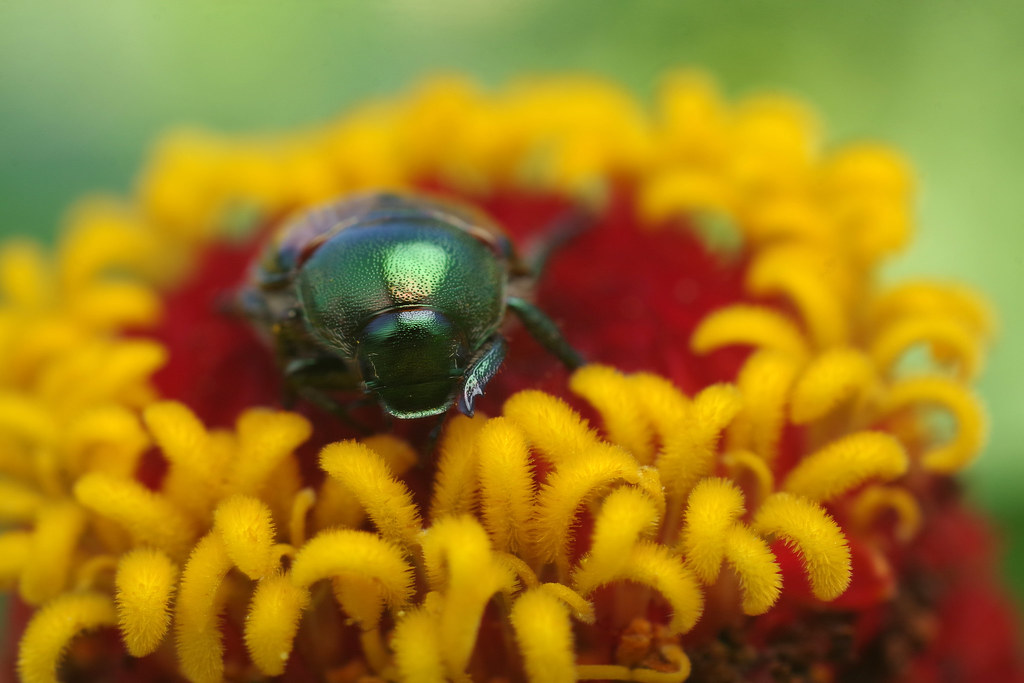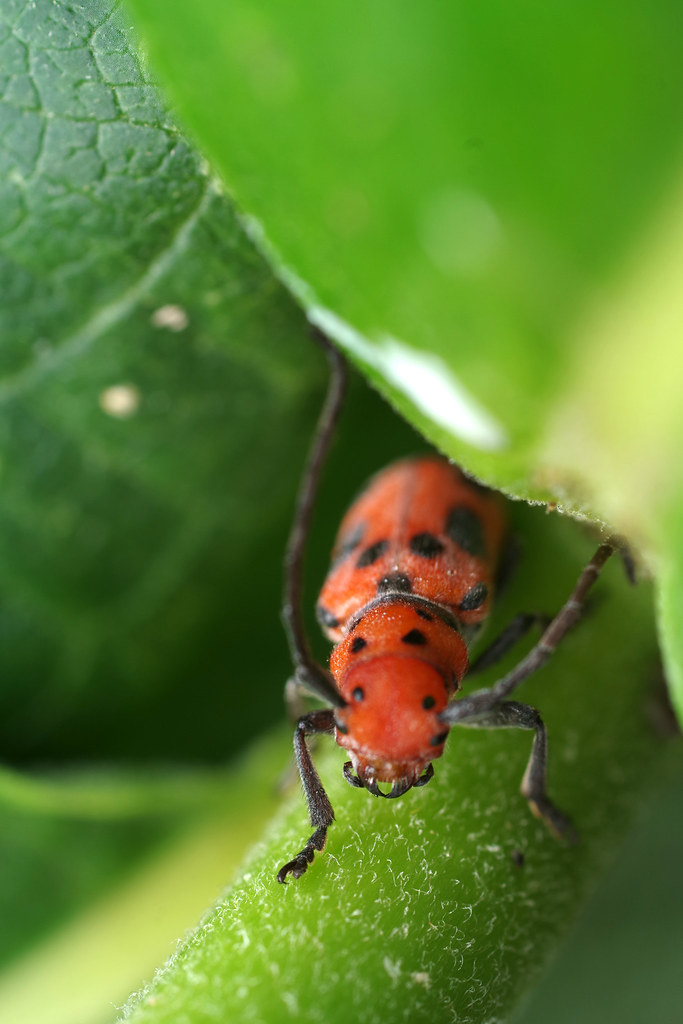Thank you all for the comments. I was using live view with focus peaking when taking the shot, but that wasn't enough to get the eyes. Focus peaking would have outlined the area that was in focus, but the eyes would have been within that outline, though not outlined themselves. At the higher magnifications I often shoot at, determining when the eyes are highlighted in focus peaking is much easier, as they are proportionately larger on the screen and more clearly distinguished from the rest of the head. The plane of focus is more obvious. At 1:1, the eyes can be lost within the focus peaking highlights of mandibles or antennae, say. Magnified live view would have helped me to distinguish the focus on the eyes, but my hands are not as steady as they used to be and magnified view cuts out as soon as pressure is applied to the shutter release button. For my usual lower light shooting on my front porch, I can often brace myself or the camera against the the same wall on which my subjects are often parked. I can carefully slide the camera along the wall until I've got what I want. For shots like these in the field (as opposed to on the porch) I could try using a monopod again, but I do find it restrictive.
---------- Post added 07-26-18 at 10:13 AM ----------
More macrophotography CSI. Here's another unsuccessful shot, showing either camera or subject movement. Not by much, but still too much.

More flash power combined with a smaller aperture would have killed the ambient light. Using the flash sync. speed of 1/180, instead of the 1/100 sec. shutter speed used would have helped, too. As it is the ambient light was strong enough to register the movement of the subject or camera during the exposure before the flash burst at the closing of the shutter. This is more obvious in the 100% crop, visible as a ghostly trail just to the left of brighter areas. It was breezy at times while I was shooting, so that might be the culprit.

With my usual low-light shooting, ambient light is dim to non-existant, so the flash is the only light source for the entire exposure. Short flash duration acts like a very fast shutter speed, freezing any movement. With my reversed cine lens on extension, the effective aperture at nearly 4:1 is a lot smaller than the indicated f8, much smaller than the effective aperture on this nominal f9 exposure with the Sigma 50mm at 1:1. That goes a long way towards defeating the ambient light of the base exposure before flash. I can also tell the difference between the two lenses in the difference in the appearance of the dirton my sensor, which is much more prominent at smaller effective apertures of the reversed cine lens than the Sigma 50mm.
I do actually have pictures that work

, but sometimes duds can be very instructive.


 Similar Threads
Similar Threads 











 , but sometimes duds can be very instructive.
, but sometimes duds can be very instructive.



 Post #1 by Thagomizer
Post #1 by Thagomizer








